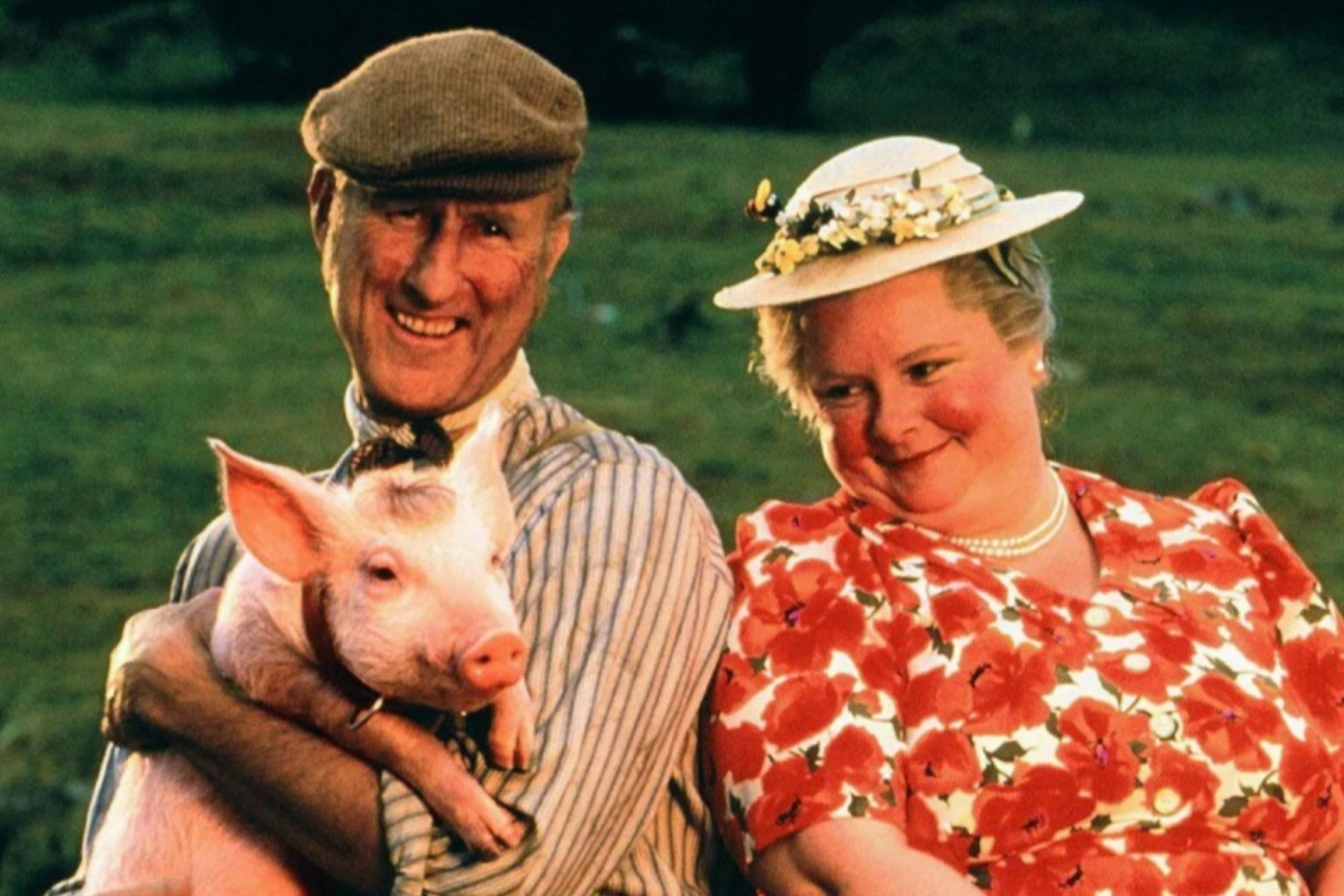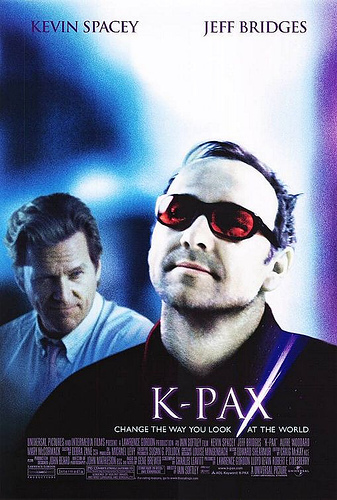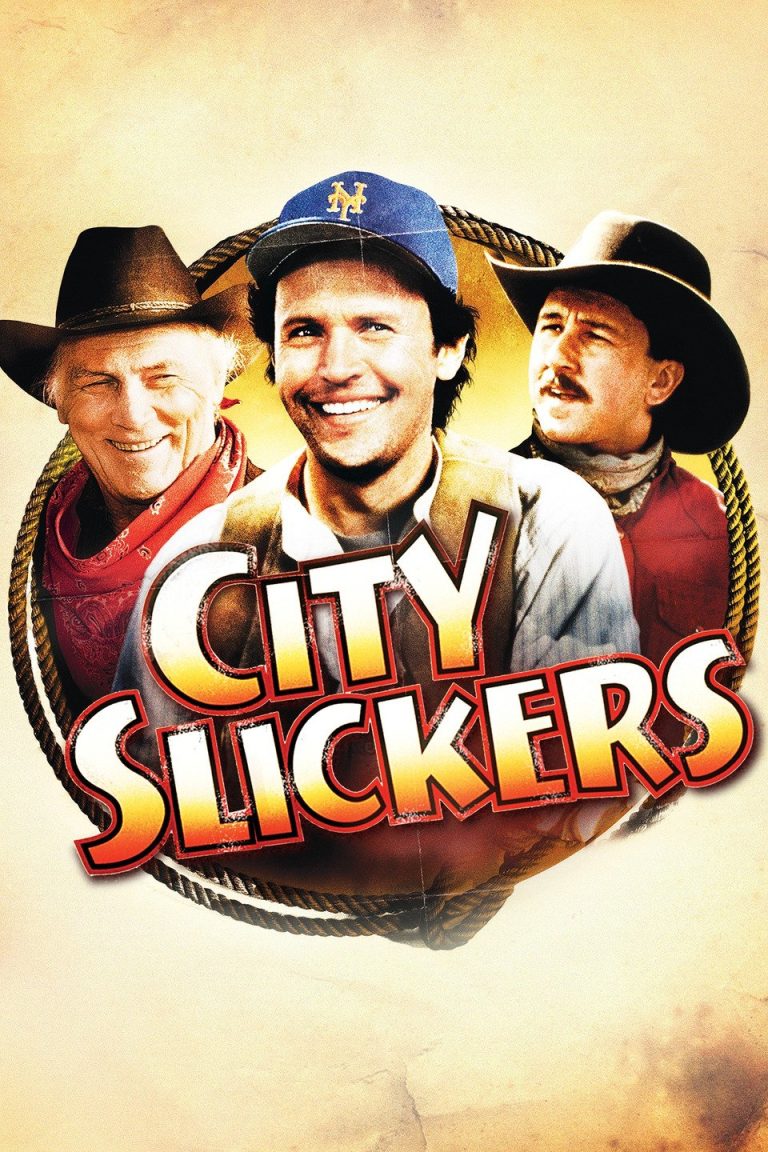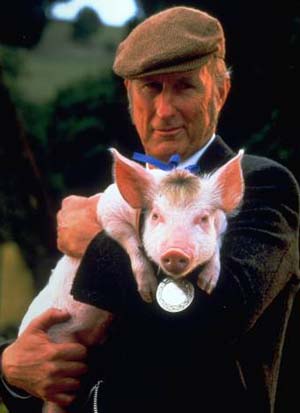A Pig with a Thematic Purpose
Here’s another post on theme from 10 years ago. Theme is so important to your story, so I hope you learn ways to incorporate theme into your pages!
As we’re exploring theme here, I want to add a little aside about symbols. Tying symbols in with a theme is very powerful, and the movie Babe does a great job with the gate as a symbol throughout the movie. I imagine few people ever really notice the bit about the gate other than the way it adds a bit of plot and humor, but it serves as another theme by way of symbolism.
Symbols as Theme
Symbols are generally a visual object, but they can also be a thought, idea, phrase, or gesture. These can also be considered as motifs (Check out my blog posts on motifs and how to use them to enrich your story). But the great thing about symbols is they pack a lot of meaning in a simple way. When you use a symbol as a thematic element, you want it to reappear numerous times throughout your novel.
One exercise Donald Maass had us writers do in his week-long Breakout Novel workshop was to write a brief summary of each of our book’s scenes on index cards. Then we were to write the point of that scene on the back. He then told us to pull out the three cards that we felt contained the most important scenes in the book.
I was surprised at which scenes I chose. And what was even more surprising (at least until I saw where he was going with this) was that all three scenes were similar and had the same component: theme. It pounded home the awareness of what my book was really about, and up until then I had some other ideas. What this showed me were the elements I felt passionate about. I didn’t choose the best written scenes but the ones that moved me the most. And they were all scenes with moments of forgiveness.
Come On—Who Cares about a Pig?
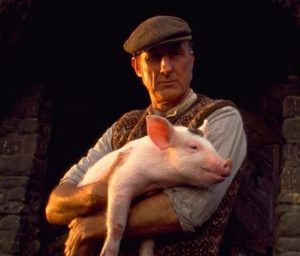 Who would have thought such a simple, small children’s book would have become such a blockbuster movie? A lot of children’s movies are entertaining and funny for all ages, but Babe excels in a number of ways—not just in the quality of the animation and acting but because there are some great themes going on here. The most obvious one has to do with one’s “purpose” in life.
Who would have thought such a simple, small children’s book would have become such a blockbuster movie? A lot of children’s movies are entertaining and funny for all ages, but Babe excels in a number of ways—not just in the quality of the animation and acting but because there are some great themes going on here. The most obvious one has to do with one’s “purpose” in life.
Babe, spared by fate, finds himself confused and alone at Farmer Hoggett’s farm. But he soon learns that every animal on the farm has a purpose—and so he goes about trying to discover what his might be. The theme is woven throughout the many characters—Rex the dog is in charge and has a noble purpose, but he feels ashamed that, because of a tragic occurrence, he cannot fulfill his purpose as well as he used to.
The duck, on the other hand, is desperately seeking purpose, because—as the mean old cat cruelly informs Babe–those without a purpose end up like Roxanne—a duck cooked and steaming hot on the Thanksgiving table. But by the time Babe learns he has “no purpose,” he has already demonstrated to Farmer Hoggett his wonderful sheep doggie skills.
Mind the Gate
Babe experiences a saving twist of fate, for Farmer Hoggett is a keen believer in divine purpose. His character is concerned with everything having a place, everything functioning efficiently. The symbol that ties in with this theme of purpose is “the gate.”
Using this subtle but powerful element, the writer of this script keeps us coming back to Hoggett tweaking his gate. Hoggett’s aim is to have the gate close with a gentle touch and lock with the least amount of extra effort. Likewise, he wants his farm to run smoothly, and part of that involves his dogs herding the sheep into their pens for various reasons. When he sees how Babe has acquired a knack for herding these sheep effortlessly, his attention rivets on the humble swine. Here is a pig with a destiny—with a purpose.
Perhaps it is an unusual one, a strange and aberrant one. But Hoggett is not one to give a hoot what anyone else thinks—even when hundreds of people are laughing at him as he strides out into the arena with Babe as his “sheep herding dog” to compete in the time trials. He doesn’t enter Babe so he can get attention or laughs, or to become famous or notorious. He enters Babe because it makes perfect sense. Babe is an excellent sheep dog, despite his porcine nature, and it is only logical for him to compete and earn the recognition deserved for his skills.
Hoggett is a man of few words, but we do get a sense of the affection he has developed for Babe when the pig appears sick and won’t eat. Hoggett lapses into a sweet song and dance to cheer Babe up, which is just what Babe needs to fight off his depression and meet his destiny. Hoggett and Babe bond in purpose, and there is nothing so powerful as two linked together in such a manner.
By the end of the movie, Hoggett’s gate closes perfectly, and Babe ends his sheep dog trial–to the astonishment of the now-silent audience—with Hoggett only making one simple move: lifting his hand to close the gate behind the sheep Babe has properly herded into the pen. That action with the gate is emphasized in slow motion and as a close up—just so you will pay attention to the importance of the moment … and the symbol.
No, It’s Not Just about a Pig!
The audience in the stands jumps to their feet and cheers—and those watching the movie feel the same exhilaration. Babe and Hoggett have faced all odds and humiliating jeers and the weight of others’ disbelief in them. But they shine victoriously because they proved faithful to their calling. They found their purpose in life and grabbed it by both hands, despite every possible obstacle and discouragement.
This theme is huge when you realize the movie is not about a pig that just happens to have some special skills—that’s not the theme at all. Because Babe explores a universal theme that each one of us struggles with daily—how to find our purpose in life and fulfill it—this movie met with enormous success.
Take it from Babe—once you realize there are two kinds of stories—stories “with a purpose” and stories “without a purpose”—you will understand what you need to make your novel a breakout success. Take a lesson from Babe—in your own life and in your writing–and look for the universal theme that needs to be expressed, however masked in your story.
This week, watch Babe. If for some reason you’re embarrassed to do so, say it’s for a writing exercise—which it is. But take a look at the themes at work and pay attention to the symbolism. Think of a symbol you could use in your novel to tie in with your theme. Feel free to share your comments here!

